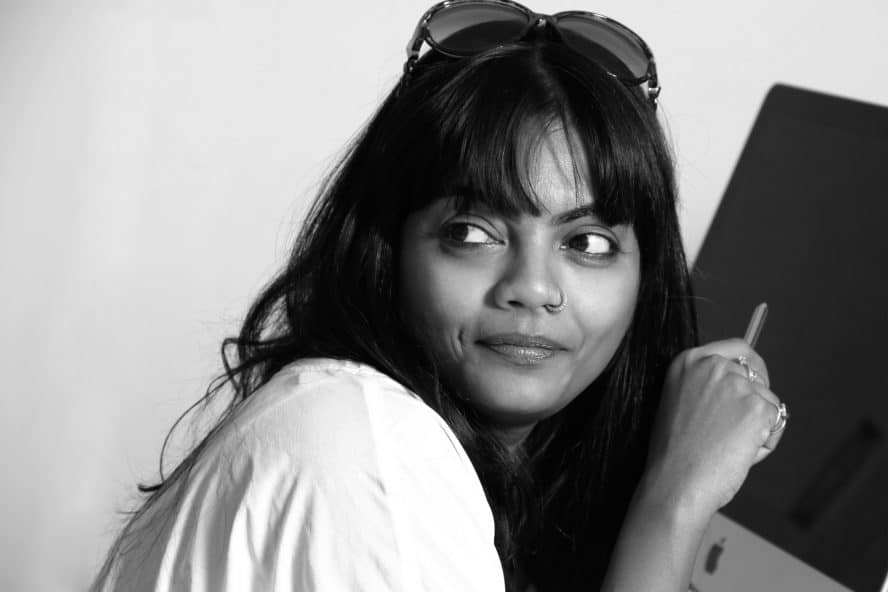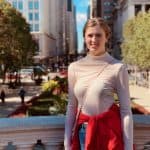Reduce, reuse, recycle. We’ve all heard it, right? And while many of us can recite the three R’s of sustainability no problem, actually implementing them into our business practices is another matter entirely. That brings to sustainable fashion designer Runa Ray, who, in 2012, committed herself to creating an environmentally friendly fashion brand. In Fashion Mingle’s Mastermind session “How to Integrate Sustainability into any Fashion Business,” panelists, including Ray, discussed the best ways to integrate sustainable fashion into the industry.
“I decided to bring to the forefront the fabric wastage and create art forms and use fashion as a tool to get the message across using Reduce, Reuse, and Recycle,” said Ray in regards to her 2020 line which was exhibited in Tokyo. She stated that her ultimate goal is “to try and help people understand and educate the consumer on the choices that they are making and how fashion could be detrimental.”
The fashion industry is no stranger to controversy in terms of environmental impact. In fact, the fashion industry is responsible for 8-10% of the world’s greenhouse gas emissions, and 20% of industrial waste pollution. With major pushback seen against fast-fashion in recent years, sustainable fashion and designers like Ray are a more popular – and important – topic than ever.
Specifically, Ray has committed herself to sustainable fashion by using fair trade garments, organic fabrics, and zero waste initiatives. Her garments are also completely biodegradable. “Another process that I employ in my design is I work to keep the end in mind,” said Ray. So, when a consumer is done with one of Ray’s garments, they can place it in a burlap sack, and bury it in their garden. The garment automatically biodegrades and becomes fodder for plants.
In addition to powerful plant food, Ray has worked to create powerful messages in regards to sustainable fashion. One of Ray’s incredible pieces from her 2020 Tokyo collection was a dress with a large barcode printed on the front, and the words “F**k the Environment” underneath. “This piece is meant to show what consumerism is doing to our planet and what you see [when you select a garment and wear it] is not what is behind the scenes,” said Ray. Basically, consumers only think about clothes when they put them on, not when they’re being constructed and the environmental impact they have.
Another breathtaking piece from this collection was a dress with the words “Imagination is the Only Weapon Against Reality” on the front, and printed flowers on the chest and shoulders that appear to be bleeding. “Nobody talks about what happens to the muslin prototype,” said Ray about this dress. “So I decided to use a muslin prototype and convert it into something that had a meaning which could be showed to the public.”
Muslin is a plain-colored cotton weave that is generally used, as Ray said, as an initial design prototype by designers, and then disregarded later. Ray’s intention for this dress was to be “food for thought for a person to kind of really sit down, reflect, understand and see what they can probably do in terms of buying or even creating.” In addition to sustainable fabric choices, Ray also uses her own special methods to create dyes directly from plants.
And while sustainable fashion has been a hot topic of conversation within the industry in recent years, it has been just as prevalent among other businesses, governments, and organizations internationally. In 2015, the United Nations adopted a list of 17 Sustainable Development Goals (SDG) with the hope to achieve each goal by 2030. The UN SDG website describes them as “a universal call to action to end poverty, protect the planet and ensure that all people enjoy peace and prosperity by 2030.”
Three of Ray’s favorite goals include number 13, Climate Action, number 14, Life Below Water, and number 15, Life on Land. While these three goals in particular focus on climate change specifically, Ray believes that all of the goals are interlinked. “Once you start identifying with and adopting a certain SDG, you learn how you can move on and incorporate another SDG,” said Ray. Once one of the goals is successfully implemented, they create a snowball effect of positive outcomes.
Ray has clearly made massive strides in implementing sustainable fashion into her brand, but smaller steps by other aspects of the industry are being noticed as well. According to Shirin Movahed, a fashion and branding lawyer, large corporations are beginning to adapt their business practices. “More and more watchdog companies are being developed to monitor companies and ensure sustainable practices are being met,” said Mohaved. In addition to the development of these companies, it has become more commonplace to include labels in clothing that ensure sustainable practices were met.
These tags hold a heavy meaning, because according to Ray, it is hard for fashion industry professionals to trace sustainability at any level, including designers. “It’s not like the FDA,” said Ray. “I think it’s going to take time, but we’re working on.”
And she’s right, implementing sustainable fashion into as many aspects of the industry as possible is not going to be an easy task. One of the first steps? Educate the consumer. “It is really important to get the consumer to understand not only what goes into the design process and manufacturing, but also what they can do with the product how can they upcycle it,” said Ray. While there may be a long (but very necessary) road ahead, designers like Ray and guidelines like those from SDG that may just be able to lead the way and make sustainable fashion the new norm.
What can you do to become a sustainable fashion consumer?
5 Tips for implementing sustainable fashioning into your wardrobe:
- Buy secondhand. Thrift stores are having a moment, and we’re here for it! Shopping secondhand prevents excess clothing from being produced, and saves you money. Plus, it gives you the chance to find unique pieces no one else has! *Queue Macklemore’s Thrift Shop*
- Buy less. This one may seem obvious. However, making thoughtful purchases could significantly reduce the amount of clothing that eventually ends up in a landfill. When you’re shopping, truly ask yourself if the pieces you are buying are worth it, and if you’ll actually wear it. Just because it looked great on the mannequin doesn’t mean you actually need it.
- Upcycle. Find creative ways to reuse your clothes. Use unwanted pieces and turn them into scarves, hair pieces, bags, cleaning rags, and so much more. There are tons of tutorials on the internet with tips and tricks for upcycling. Finally all of that time spent scrolling through Pinterest will feel so worth it!
- Shop local. Shopping at local stores and boutiques will help ensure you know where your clothes are sourced from. And while online shopping is the most amazing things to ever grace the internet, shopping in stores around your area greatly decreases the carbon footprint of your wardrobe.
- Invest. Fast fashion has been taking a lot of hate lately, and we kind of have to agree with all of the controversy. Buying copious amounts of cheap, mass produced clothing that is just going to fall apart is not only bad for the environment, it’s bad for your wallet in the long run. It’s a great idea to save on basic pieces, but investing in clothing that is well-made or sustainably made (or both!) is a great way to build a wardrobe. Plus, it makes your clothes feel more special!
For more on becoming a sustainable fashion consumer, Runa Ray or Mingle Mastermind, sign up now for a Fashion Mingle profile! Make sure to also check out the United Nations Sustainable Development Goals.
- 9 Tips for Growing Your Modeling Career Now and Forever - January 5, 2021
- What Does Sustainable Fashion Mean to You? - January 5, 2021
- 12 Tips on How to Become a Young Entrepeneur - December 30, 2020
- 6 Tips on How to Build a Strong Fashion Community - October 14, 2020
- Why Your Vote Matters to the Fashion Industry - October 10, 2020


